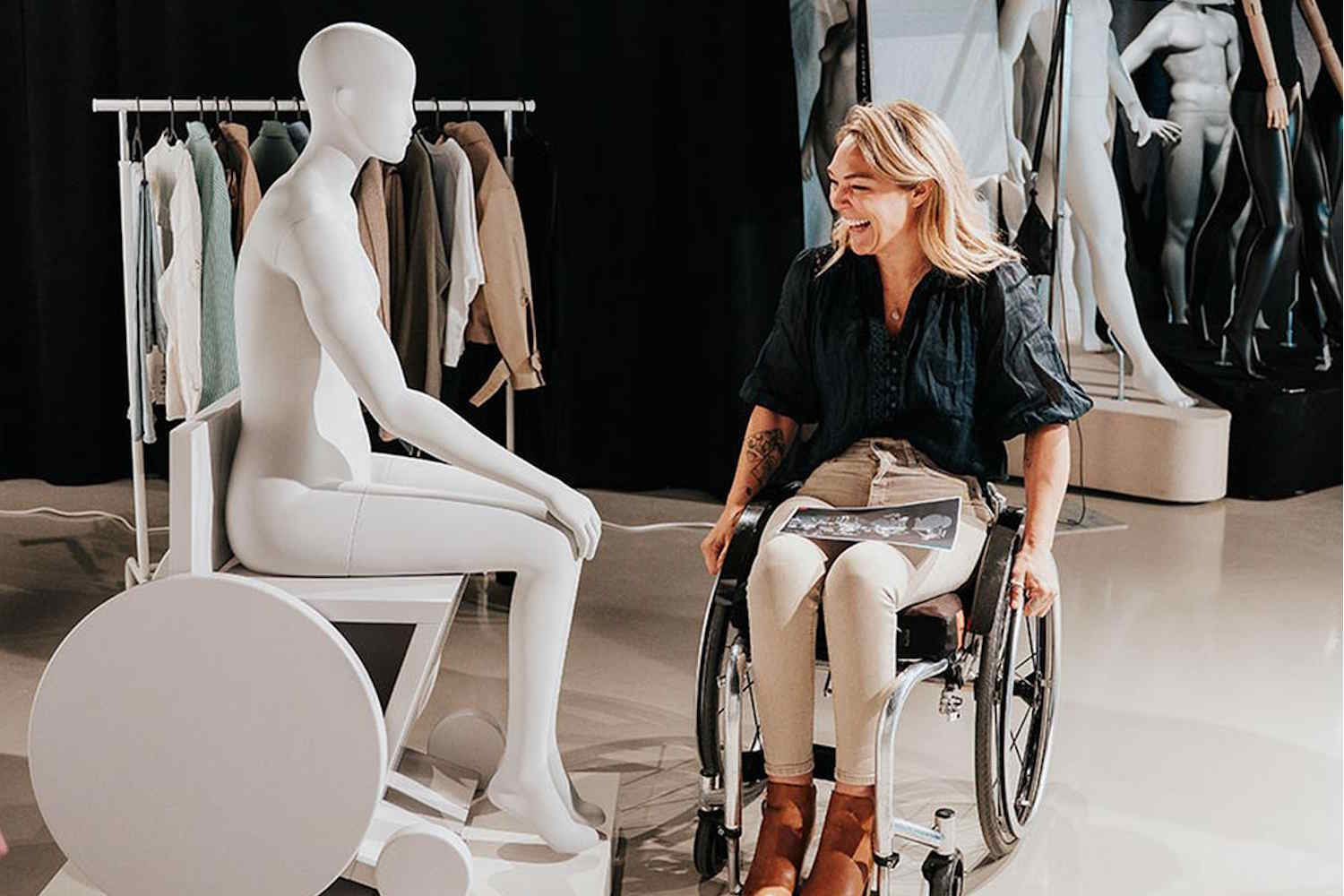Primark introduces “Sophie,” a wheelchair-using mannequin, as part of its inclusive Adaptive line—but questions linger about the brand’s fast fashion practices.

@Primark
When you walk past the window of a Primark store in Milan’s via Torino or in any of 21 other locations across nine countries, you might notice something unusual — a mannequin sitting in a wheelchair. Her name is Sophie, and she’s not just any mannequin. She was designed in collaboration with British TV presenter and disability advocate Sophie Morgan, who has used a wheelchair since the age of 18.
Sophie now plays a key role in showcasing Primark’s Adaptive clothing line — a range of menswear and womenswear tailored specifically for people with disabilities. From magnetic buttons to easy-on designs, Adaptive is part of Primark’s ongoing push to become, as it states, more inclusive and to “promote diversity and make fashion accessible to a broader group of people.”
A year in the making
Sophie wasn’t an overnight project. Her creation took more than a year of work by Primark’s visual merchandising team, closely guided by Morgan. The team focused on one crucial detail: posture. Sophie’s seated pose was carefully developed to authentically reflect someone using a manual wheelchair — not just a mannequin placed in a chair as an afterthought.
And the chair itself? Custom-built. Designed specifically for Sophie, it’s sturdy, functional, and seamlessly integrated into the mannequin’s structure. A product not just of design, but of intent.
Inclusivity or distraction?
It’s a strong symbolic gesture — and one that Primark has every reason to be proud of. But here’s where things get more complicated.
Because Primark is still Primark. The very mention of the name conjures up fast fashion at its most aggressive: ultra-cheap clothing, ultra-high turnover, and questionable environmental and labor practices. For many, this latest campaign raises the question: is this true commitment to inclusion, or is it “diversity-washing”, a variant of greenwashing — another way to polish the brand image while keeping the problematic production model intact?
Primark is one of the biggest players in an industry infamous for its heavy environmental footprint. From the exploitation of cheap labor in low-income countries, to the mountains of textile waste generated annually, to the excessive use of water and energy, fast fashion’s impact remains deeply troubling.
Sure, representation matters. No question. And yes, seeing a realistic, thoughtful depiction of disability in store windows sends a powerful message to consumers and society at large. But symbolic gestures shouldn’t be used as a smokescreen for unsustainable or unethical practices.
What progress really looks like
Sophie, the mannequin, is a welcome and meaningful addition to the retail landscape. She brings visibility to a community that’s long been underserved by mainstream fashion. And if nothing else, she starts conversations — like this one.
But the real work of inclusion can’t stop at the shop window. It must extend behind the scenes, into the supply chains, factories, and boardrooms. True change requires rethinking how clothes are made, who makes them, and under what conditions.
Representation is only one piece of the puzzle. The bigger question remains: who’s benefiting — and who’s still paying the price?
Source: Primark
